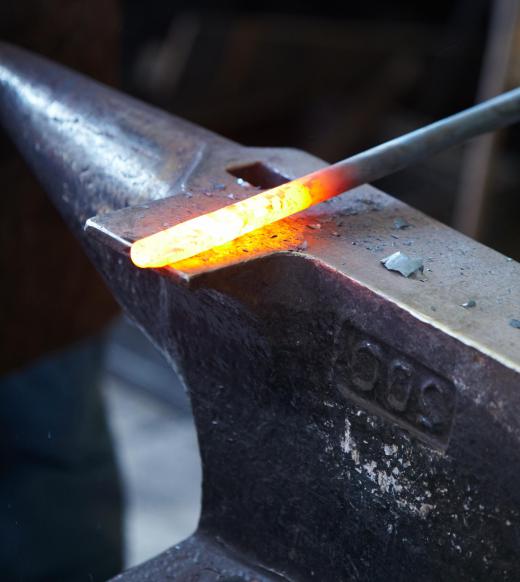The English wheel is a piece of equipment people can use in metalworking to create compound curves, such as those seen in the fenders of a car, in flat sheets of metal. People originally developed this tool for use in the construction of cars and carriages. Metalworking for aviation can also involve an English wheel. This tool is most appropriate for custom and small batch projects where people have the time to work metal by hand and work pieces manually to achieve the desired shape and structure.
This device includes a set of wheels mounted in a large stand. Operators can change the lower wheel, known as the anvil, with people using anvils that have varying degrees of curvature to achieve the desired shape. The upper wheel has a large, flat surface, and mounts above the anvil to allow people to pass sheets of metal between the wheels while working them. The size of the stand limits the overall size of the project.

To use an English wheel, the operator passes a sheet of metal between the wheels while they rotate. The upper wheel bears down on the anvil through the sheet, thinning and stretching the metal. The shape of the anvil forces a curve into the sheet. The operator can move the metal around in the machine and stop to change anvils to create a curved piece of metal. People must be careful to avoid thinning the metal too much, as this can weaken it. They may add reinforcement like flanging around the edges to make sure the metal holds its shape.

Wheeling, as it is known, is one approach to fabricating metal parts. The operator needs to have a high degree of skill, especially since people usually need to be able to make symmetrical parts. Variations in the compound curvature of the symmetrical pieces will be very noticeable in the finished product. The operator also needs to pay attention to scuffs, scratches, and gouges while using the English wheel. In addition to weakening the metal, this can also cause problems with applying paints and other finishes.
Numerous manufacturers produce English wheel and anvil sets of various sizes. The cost can vary, and some people may prefer renting equipment to buying it. Many cities have open metalworking facilities where people can use equipment by the hour in exchange for paying a fee, providing access to useful equipment for people who only need it periodically.
Ever since she began contributing to the site several years ago, Mary has embraced the exciting challenge of being a About Mechanics researcher and writer. Mary has a liberal arts degree from Goddard College and spends her free time reading, cooking, and exploring the great outdoors.

